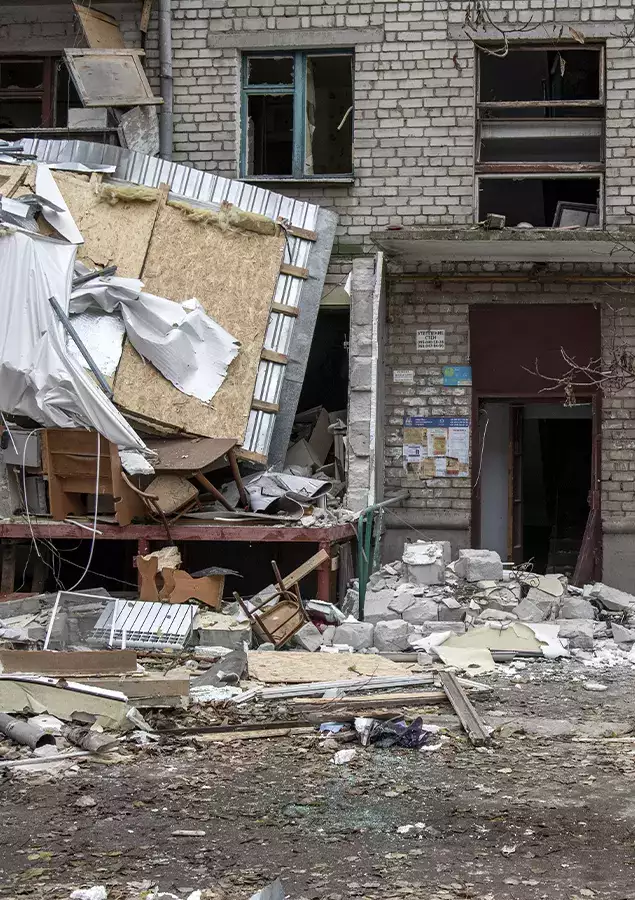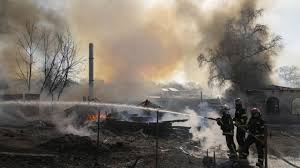This article originally appeared in The Times of India
Ukraine war showed rich countries can find money for diversifying their own energy supply but not for global climate finance. It also showed how fossil fuel companies exploited governments’ energy security concerns

The war in Ukraine has killed thousands, displaced millions and damaged the region’s economy. But the cost of this war is being borne worldwide, especially by the poor.
The war’s most significant consequence has been an extraordinary increase in food and fuel prices. As a result, most of the world’s population has paid through its nose to procure basic food and energy.
According to a recent study, the war has doubled household energy costs globally. In the poorer parts of the world, like Sub-Saharan Africa, household energy costs increased by up to three times the global average, pushing millions back into energy poverty. The prices of fuels were so high that the total energy bill of the world reached $10 trillion for the first time in history in 2022.
Likewise, the global Food Price Index (FPI) of the United Nations Food and Agriculture Organization (FAO) was between 154.7 to 159.7 from March to June 2022, the highest level since the index’s inception in 1990.
The combined impact of higher fuel and food costs has pushed millions of households into absolute poverty. The increase in fuel price alone is estimated to have driven 78-141 million people below the World Bank’s extreme poverty line.
But the misery of the poor has been a bonanza for the rich. The Russian invasion of Ukraine has turned out to be the biggest profiteering opportunity, especially for the fossil fuel industry.
At about $4.0 trillion, the highest ever in history. For comparison, India’s GDP in 2022 was approximately $3.5 trillion. So, a handful of companies and their shareholders made more money than the value of all goods and services produced by a country of 1.35 billion people. Saudi Aramco, the world’s biggest oil company, is projected to have a net profit of $170 billion, and the six largest western oil companies made over $200 billion. The worst part is that these extra profits were paid through fossil fuel subsidies.
In 2022, government subsidies worldwide for fossil fuel consumption skyrocketed to more than $1.5 trillion, again the highest in history. The largest increase in the subsidy was in the developed world, especially Europe, which never gets tired of preaching the virtue of ending fossil fuel subsidies in the developing world to combat the climate crisis.
The most critical piece of this high price-profit-subsidy story is that some of the money made by the fossil fuel companies is currently being invested in exploring, producing and selling more coal, oil and gas in the name of “energy security”. In 2022, an estimated $560 billion was invested by the Exxon Mobile and Chevron of the world to produce enough oil and gas to blow up the 1.5 OC target of the Paris Agreement. These oil and gas projects, termed “climate bombs”, will result in the emissions of at least 125 billion tonnes of carbon dioxide (CO2), equivalent to a third of the remaining carbon budget for the 1.5 OC target. So, the fossil fuel industry has exploited the energy security anxieties unleashed by this war to further its business goals and fast forward the world towards a catastrophic climate crisis.
But the war has also shown an alternate vision of energy security which can be achieved in a much greener way if the governments of the world decide to do so. Take the case of Europe.

Europe’s most remarkable response to the war has been the unprecedented speed with which it has eliminated its dependence on Russian gas. Just before the war, nearly half of the EU’s natural gas came from Russia; today, it is about 10%. Europe achieved this by importing expensive LNG, burning more coal, and making the highest-ever investments in green energy – solar, wind, battery and electric vehicles. According to a recent estimate, these actions may have advanced the green energy transition in the EU by a few years. However, the EU and the UK had to shell out an additional half a trillion dollars for this transition in 2022.
That suggest rich countries, who dilly-dally on providing tens of billions to the developing countries as climate finance, suddenly found hundreds of billions for diversifying their energy supply. This shows that if the developed countries want, they can mobilize enough resources to accelerate their climate actions and support developing countries in mitigating and adapting to the climate crisis.
The EU was not the only region that has made record investments in green energy. According to BloombergNEF, globally, for the first time, investment in green energy technologies exceeded $1.1 trillion and was equal to the money spent on fossil fuels. The highest investments were made in China and the US; the EU was in third position. While the total investments are still way short of what is required to meet the climate goals, it is an important milestone. And this milestone has been achieved again because of energy security considerations.
So, the war has given us a glimpse of both the worst and the best scenario for the energy transition and climate crisis. It is up to us to choose which one we will pursue, climate bombs or green energy. Similarly, the world has to decide whether it wants death, poverty and profiteering or a peaceful solution to end this war. Again, the choice is ours.
Chandra Bhushan is one of India’s foremost public policy experts and the founder-CEO of International Forum for Environment, Sustainability & Technology (iFOREST).
